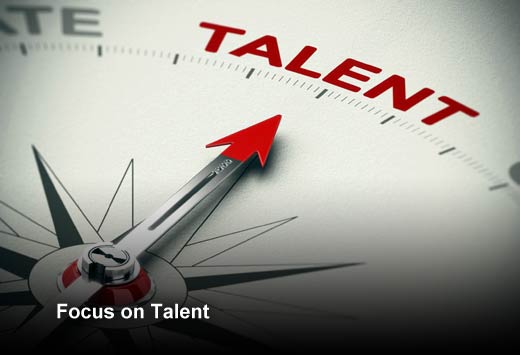The nature of work is drastically changing. The rapid pace of technological advancements, shifting demographic patterns, the switch to knowledge-based economies, and increasing pressures for innovation are all driving this transformation and defining the future of work. Business leaders are also mindful that what made them successful in the past will not necessarily make them successful in the future.
In order to be successful and stay competitive, companies must prepare for what the workforce will look like in 2020 and beyond. To understand the challenges and opportunities associated with the changing nature of work, last year Oxford Economics and SAP surveyed over 2,700 executives and more than 2,700 employees in 27 countries. The results show that many companies lack the structure, strategy, culture, solutions and resources to manage employees effectively. To succeed, they must address the role and relevance of people strategy, changing demographics and evolving definitions of work, leadership ability and cultivation, employee wants and needs, and talent development.
In this slideshow, Jewell Parkinson, head of Human Resources for SAP North America, shares a five-point checklist that executives can use to develop winning workforce strategies in this new era of work.
The Future of Work
Click through for a five-point checklist that executives can use to develop winning workforce strategies in this new era of work, as identified by Jewell Parkinson, head of Human Resources for SAP North America.
Simplify the Work Experience
Adapt company structure to attract, develop and retain the best talent. As members from the baby boomer generation continue to retire, taking substantial amounts of knowledge and experience with them, organizations are exposed and vulnerable and need to replenish and extend this wealth of knowledge. What’s more, in a world driven by innovation as a critical differentiator, companies are competing fiercely for skilled talent in order to win.
In an effort to attract skilled talent, make decisions and take action in a faster, more agile way, companies are adopting a flatter working structure, which is simpler, non-hierarchical and collaborative. This type of organizational design is better suited to the more complex and nimble nature of twenty-first century work. While traditional hierarchical models are well suited for establishing clear lines of authority and centralizing decision making power, they’re not ideal for fast innovation or adapting to change.
Seek Actionable Insights
Leveraging Big Data has been slow to penetrate the world of human resources. While most leaders talk about applying Big Data to marketing and consumer businesses, there is an even bigger opportunity to apply it to HR. This is changing quickly as businesses desire to gain meaningful insights to make timely and evidence-based decisions from their own data to support growth strategies and prioritize workforce development investments. As well, leveraging external data sources will be increasingly important to predict things like what skills will be needed and where those skills are being developed to shape recruitment and development and retention efforts.
Most companies have tons of HR-related data available, but don’t have the analytics in place to capitalize on it. If we can apply science to improving the selection, management, and alignment of people, the returns can be tremendous.
Focus on Talent
Utilize progressive technologies to bring employees together and provide easier access to information in a faster, agile and more user-friendly and effective way. In today’s workforce, diversity goes beyond differences in gender, age, ethnicity and cultural background. It also includes different skill sets, as well as types of workers, such as full-time, part-time, remote and contingent employees. Companies can accommodate an increasingly diverse workforce by pursuing strategies that encourage people to work together effectively in a simplified, more productive and engaged way.
Equipping workforces with the latest technologies that are aligned with the way workers across generations and skill sets choose to work can be beneficial. Progressive technologies, such as cloud computing and collaboration platforms, mobile devices and social networking, allow employees to join forces with people across all levels, inside and outside of the organization, and around the globe. This results in a more globally inclusive, open exchange of ideas where employees — regardless of their age, gender, ethnicity or job title — can participate and share ideas and achieve business outcomes.
Make Culture King
Long-term, sustainable success is built on a thriving culture where people feel inspired to innovate and are connected to the greater purpose. As the workforce continues to change, it is up to businesses and leaders to create a dynamic environment that leverages new technologies and platforms that enable individuals to contribute with their full imagination, creativity and passion every day.
Engaging a dynamic workforce requires powerful leadership and the ability to “walk the talk” to tap into individual passions and values. Employees of all ages and levels want to feel proud of their work and take part in something bigger than themselves and the company. This is why corporate social responsibility is becoming a fundamental part of increasing employee engagement. Individuals are developing a stronger sense of social responsibility, and want to work for organizations that offer a chance to participate in programs and support social causes that will make their work more meaningful. Strong cultures are essential to success.
Become a Learning Organization
Businesses are fast becoming learning organizations where every employee is both a teacher and a lifelong learner, empowered to positively impact business and society at-large.
Learning that is just-in-time, role-relevant, self-paced, mobile-accessible and linked to business outcomes is essential for the future of work. Development channels such as peer-to-peer mentoring also provide opportunities to learn and retool skill sets. These relationships play a critical role in tomorrow’s workforce, mostly in the form of situational, short-term mentoring, but also as part of formal mentoring programs. Reciprocal mentoring and bottom-up mentoring where junior employees share what they know with more senior co-workers is also a practice on the rise.








